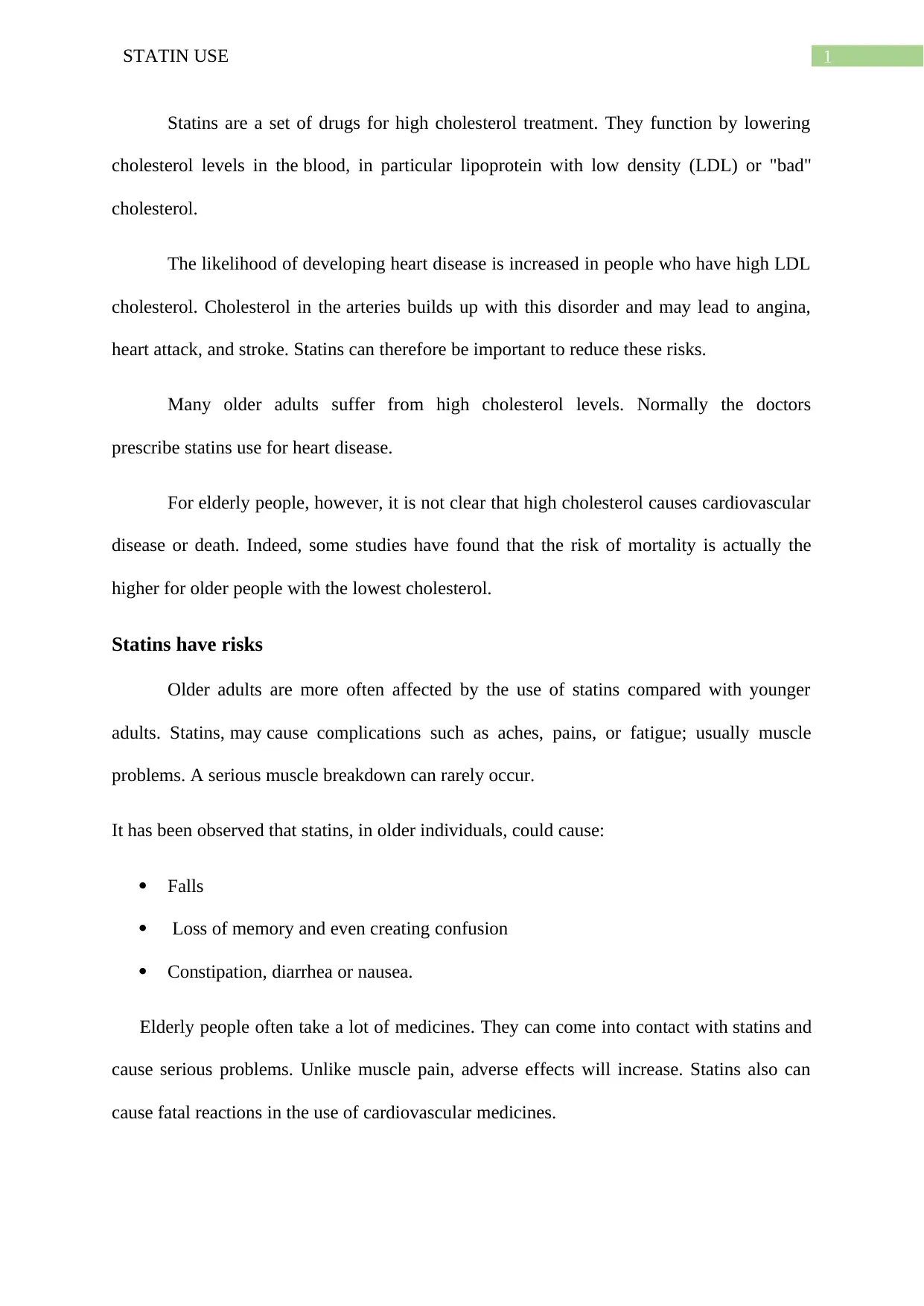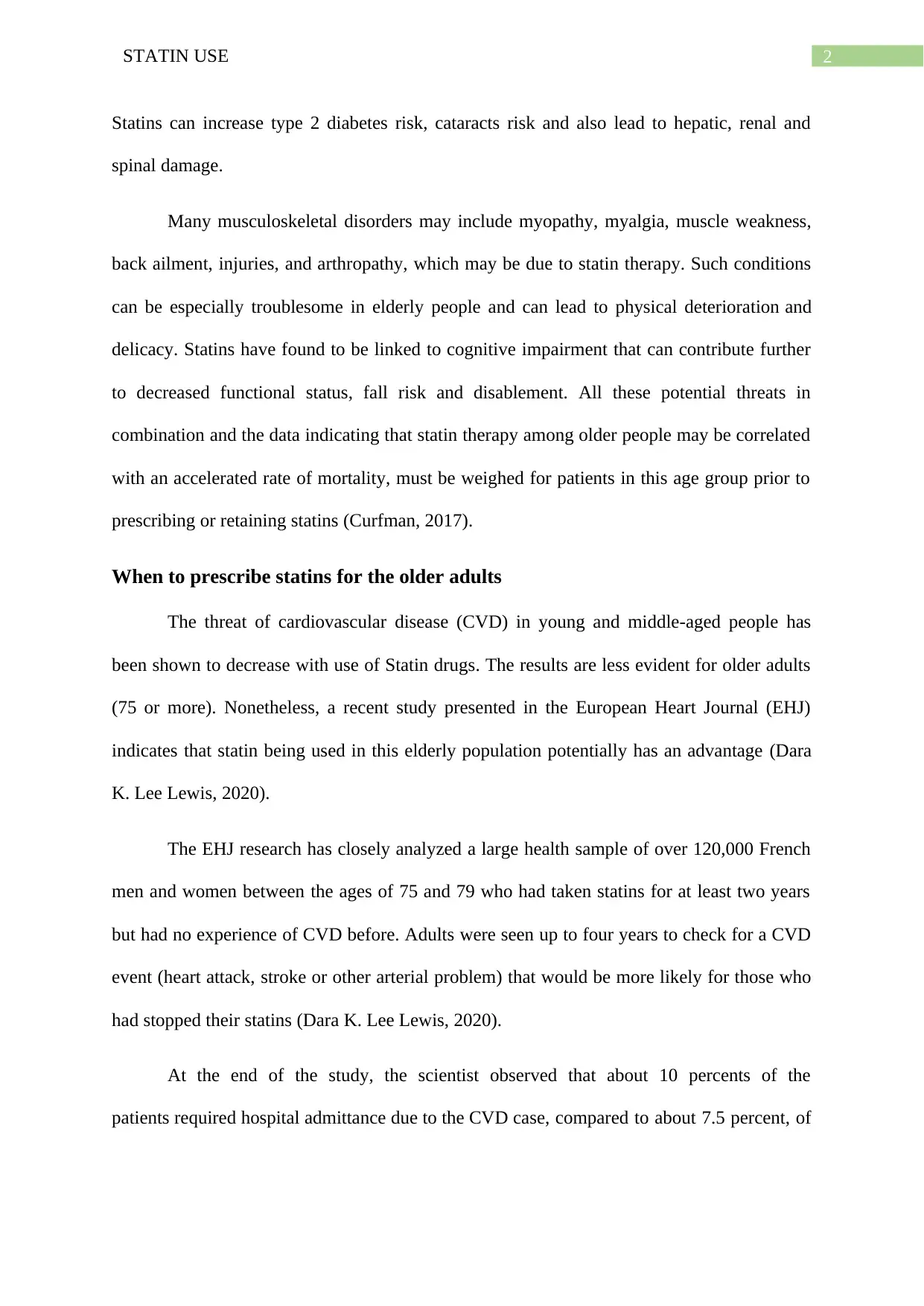Assessment and Intervention for Statin Use in Older Adult Clients
VerifiedAdded on 2022/08/12
|5
|771
|16
Discussion Board Post
AI Summary
This discussion board post delves into the use of statins for clients aged 75 and older, addressing the complexities of this treatment within the older adult population. The post examines the outcomes statins can address, such as reducing the risk of cardiovascular events like heart attacks and strokes, while also acknowledging areas where benefits may be less evident or require further research. It discusses the potential risks associated with statin use in older adults, including muscle problems, cognitive impairment, and drug interactions, emphasizing the need for careful assessment. The post also highlights the importance of evidence-based practice in nursing, providing assessment and intervention considerations for healthcare professionals. The post concludes that statins can be taken by older adults after a heart attack or stroke and or even a mini-stroke. Statins can also help in the prevention of a second stroke or heart attack. The post emphasizes the importance of individualized treatment plans and shared decision-making between healthcare providers and patients, considering the patient's overall health, potential benefits, and risks associated with statin therapy.
1 out of 5












![[object Object]](/_next/static/media/star-bottom.7253800d.svg)